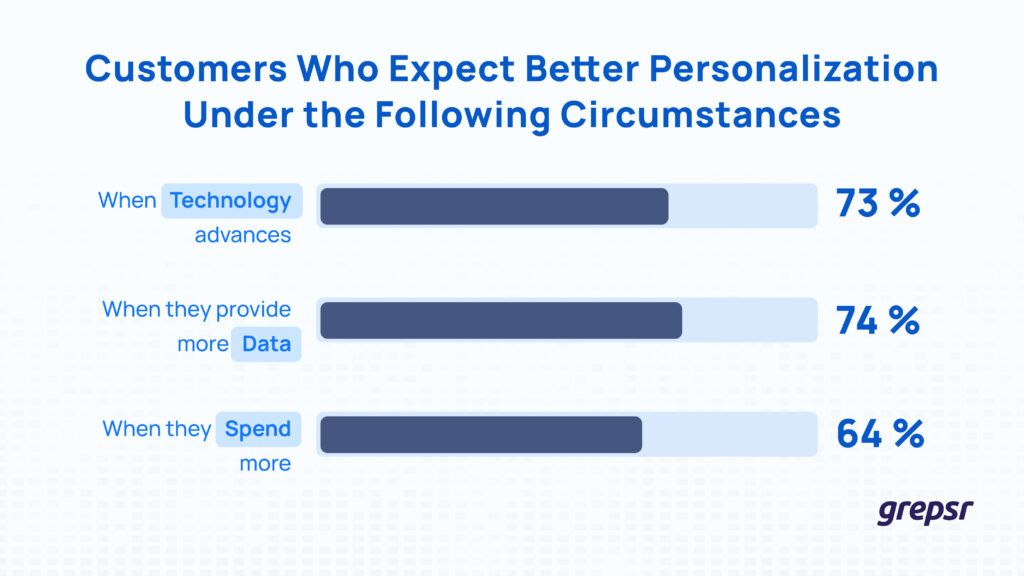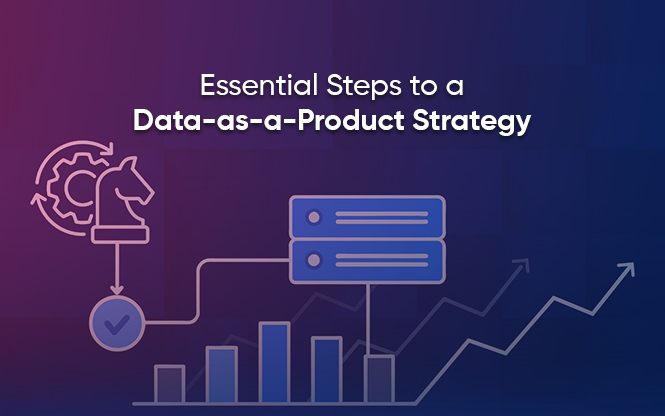
Are you drowning in, or swimming through your data?
Your business is likely flooded with data: customer intel, operational data, and market insights, pouring in like a torrent. And most enterprises, George Kobakhidze of ZL Tech says, “…are not drowning in data because of its depths, they are drowning because they don’t know how to swim.”
The question is — how can you swim, not sink?
An organization’s best customers are impossible to identify without a solid data strategy. Untapped markets with great potential? Totally missed. Relationships that might predict decision impacts? Lost at sea. Profit-boosting efficiencies? Forget about it.
A data strategy, however, brings everything into focus. You get an inside look at operations and customers. Track down sustainable growth channels. Formerly siloed data streams come together into one unified asset.
You create a single source of truth for your company.
Benefits of a Data Strategy for Data-Driven Decision Making
A data strategy is your company’s blueprint that defines the processes, people, and technologies you need to support your data challenges and fulfill your business objectives.
In 2017, The Economist declared data to be “the world’s most valuable asset.” And yet, research from just a couple of years ago found that only 30% of companies have a good data strategy.
What’s happening?
Data Challenges: Dark Data and Data Expiration
“Data!data!data!” he cried impatiently. “I can’t make bricks without clay.”
Arthur Conan Doyle, The Adventure of the Copper Beeches
Imagine you’re Sherlock Holmes trying to solve a case. You’ve got a mountain of evidence scattered across your desk — witness statements, fingerprints, surveillance footage, and crime scene photographs. You’re overwhelmed and there’s no way to make sense of it.
When you have a lot of data without a strategy, this is pretty much how it feels.
A detective needs a system to organize and analyze evidence, and your business needs a data strategy to deal with dark data and data expiration.
Think of dark data as dusty boxes of evidence buried in a storage room. There’s something there, but it’s not being used.
The same is true for your company. And on a much larger scale. 40%-90% of enterprise data is dark.
Gartner defines dark data as “the information assets organizations collect, process, and store during regular business activities, but generally fail to use for other purposes.”
Furthermore, your data has an expiration date. For example, the data collected before the COVID-19 pandemic will no longer yield actionable insights for your business now.
Data — like milk —spoils.
Dark data creates noise, while bad data misinforms business decisions.
The solution? A living, breathing data strategy to assemble your evidence, toss out irrelevant details, and lay the groundwork for a solid case.

Data-Driven Decision Making: The Key to Business Success
Why invest in a data strategy? According to a survey by the MIT Technology Review, the “most common value companies are hoping to take advantage of” is:
- Smarter, data-driven decision making (79%)
- Knowing their customers and industry trends better for a competitive advantage (61%)
- Providing better products and services (42%), and
- Optimizing internal operations (33%).
I talked to Andy Gillin, an Attorney & Managing Partner at GJEL Accident Attorneys, by email.
Brinda: When did you first construct your data strategy?
Andy: Data management is integral to my profession, particularly in the upkeep of case files, client records, reference materials, and legal precedents. The first semblance of a data strategy in my career emerged out of necessity soon after the founding of GJEL Accident Attorneys in 1972. As the caseload grew, the importance of organizing, storing, and accessing case-related data became more critical. Initially, this was a manual process: scads of paper files, information neatly inscribed on index cards, and a comprehensive and detailed filing system. With the advent and popularization of digital technology, these methods have evolved considerably.
Brinda: What does a data strategy mean to you?
Andy: The data strategy for GJEL encompasses two central aspects. First up is confidentiality — the protection of sensitive client data is crucial in legal practice. To ensure this, we utilize high-standard encryptions and secure storage solutions. Secondly, ongoing accessibility and organization of the data are vital so that relevant information can be retrieved and utilized smoothly as and when required.
How a Solid Data Strategy Improves Customer Experience

If customer is king, then data is the crown jewel.
This is where a data strategy comes in; it provides a framework for translating your data assets into actionable, customer-focused decisions.
Your customers are telling you what they need through your website traffic, purchase histories, surveys, clicks, and dwell time.
There is, however, a disconnect. In a Salesforce survey, 61% of customers complain that businesses treat them as just another number. The way to their hearts (and wallets)? Personalized experiences.
In fact, the 2022 Adobe Trust Report found that 72% of consumers trust brands more if their content is relevant and delivered when they need it. A solid data strategy is the only way to unify and operationalize first-party data.

Source: “State of the Connected Customer,” August 2023
Data Strategy in Action: Real-Life Case Studies
Office Depot, Zillow, The Canadian Cancer Society, and Sonesta International Hotels.
Four industries, one solution: a well-built data strategy to drive data-driven decision making.
Let’s find out how data-driven decision making offers you a competitive advantage in industries like retail, healthcare, real estate, and hospitality.
Retail: Data Management at Office Depot
A Red Ant survey shows that 1 in 4 retail businesses have the most difficulty integrating and managing data. Nearly half of retailers report (49%) that they have a clear data strategy, but it’s not well understood by everyone in the company.
A robust data strategy that prioritizes secure and compliant data can boost your retail business’s revenue, engage customers, and build loyalty.
With retail data analytics, companies maintain a 360-degree view of each customer journey and can provide relevant, personalized, and timely services. This then helps them to optimize pricing, manage in-store operations, and promote repeat purchases.
A powerhouse in the European market, Office Depot Europe operates two brands (Office Depot and Viking) in 13 countries. That’s a lot of data coming in from different sources. But they’re not letting it go to waste.
Office Depot is the top dog in office supplies, blending online and offline efforts flawlessly.
All their systems’ data, from offline catalogs and customer call centers to ERPs and fulfillment, are connected through their big data platform.
Their competitive advantage? Data integration and management. Office Depot’s strategy of analyzing customer segments and allocating resources strategically boosts productivity across the board.
The power of a data strategy, therefore, lies in connecting the dots.
Office Depot should know. Their revenue in 2023 was over seven billion dollars.
Healthcare: Data Strategies to Fight Cancer
In Canada, a data strategy is on track to fight cancer.
A hospital today produces about 50 petabytes of data each year, or 137 terabytes per day. This could be anything from vital signs and patient information to medical images and clinical notes.
The Canadian Cancer Society (CCS) launched a groundbreaking strategy to fill the gaps in cancer data collection. The CCS aims to collect comprehensive, cancer-specific data as part of its collaboration with the Canadian Partnership Against Cancer as well as aligning their efforts with the Pan-Canadian Health Data Strategy (pCHDS).
“Given the tremendous impact data has on cancer care experiences and outcomes for people facing the disease, we embedded patient and caregiver perspectives throughout the strategy.”
Dr. Stuart Edmonds, CCS
As AI and machine learning tools become more advanced, healthcare professionals can analyze data more efficiently than ever before. In turn, this allows them to create highly personalized treatment plans, boost overall efficiency, and pioneer cutting-edge research.
Hospitality: Sonesta’s Award-Winning Loyalty Program
As a hotel company with 17 brands, Sonesta International Hotels faced the daunting task of integrating data from 16 different Property Management Systems (PMSs).
They partnered with a data connectivity platform to extract, normalize, and deliver reservations and ‘stay data’ to their new, in-house Customer Data Platform (CDP), which powers their cutting-edge loyalty program, Tally.
“…we have a live view of what’s happening across the company – we know who our guests are, who our members are, who our non-members are, we know every reservation they’ve ever booked. If a guest logs into our WiFi, we know. All that behavior is being added to our CDP.”
Shaun Wood, Head of Enterprise Architecture at Sonesta
Sonesta won The Hotel Technology Forum’s “Hotel Visionary 2023 Product Innovation Award” for its modern, data-driven loyalty program in November 2023.
They ticked all the boxes with data-driven decision making for a competitive advantage in the hospitality industry: personalized guest experiences, operational efficiency, forecasting and strategic planning, and targeted marketing.
The best part? Wood says even staffers who were skeptical about setting up an in-house CDP are now data converts.
Real Estate: Zillow’s Competitive Advantage
A strong data strategy allows real estate companies to use their data in real time for a comprehensive understanding of the market. This translates to major competitive advantages: hyper-targeted property listings, razor-sharp pricing strategies, and highly personalized recommendations for buyers and sellers.
Did you know that property titan Zillow generates two billion customer events daily?
Here’s the kicker — Zillow doesn’t reinvent the wheel. They rely instead on two incredible data sources: real estate transaction data and user-generated data from millions of customers.
How in the world do they process and store all this data?
At the nucleus of Zillow’s strategy is its ability to maintain a comprehensive database of home-level information up-to-the-second. The foundation for developing advanced real estate data assets rests on this. In the Real Estate 2.0 race, The Zillow Data Portal serves as the company’s data command center.
The Zillow data solution, therefore, must be scalable, reliable, and capable of handling that insane volume. Enter, their Data Streaming Platform (Streamz) and Data Quality and Governance platform – which ingest, validate, process, and store all events.
“In our first 2 years, we built a platform enabling Zillow to run 3x experiments, achieve significant cost and time savings, and compute more results more rapidly.”
Aaron Wroblewski
Boost Data-Driven Decision Making with Grepsr
Data is the new oil and to tap it, you need a team of experts in external data management.
Don’t let your data go gently into the good night. Partner with Grepsr to bring your dark data to light, stay up-to-date with real-time data analytics, and make sure your data strategy isn’t just a concept, but a cornerstone of your business.
Book a call with us today to scale your business’s data-driven decision making!




















